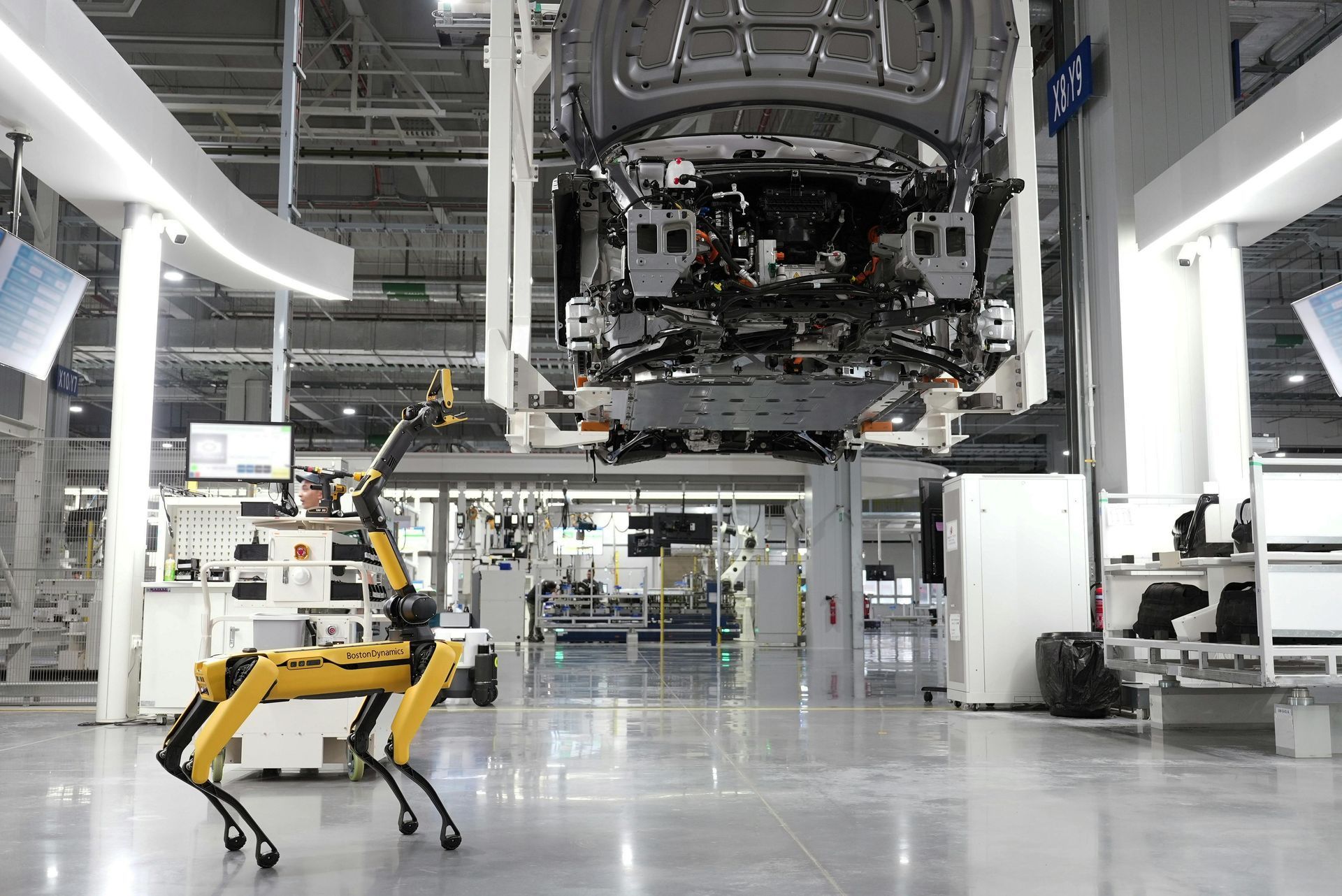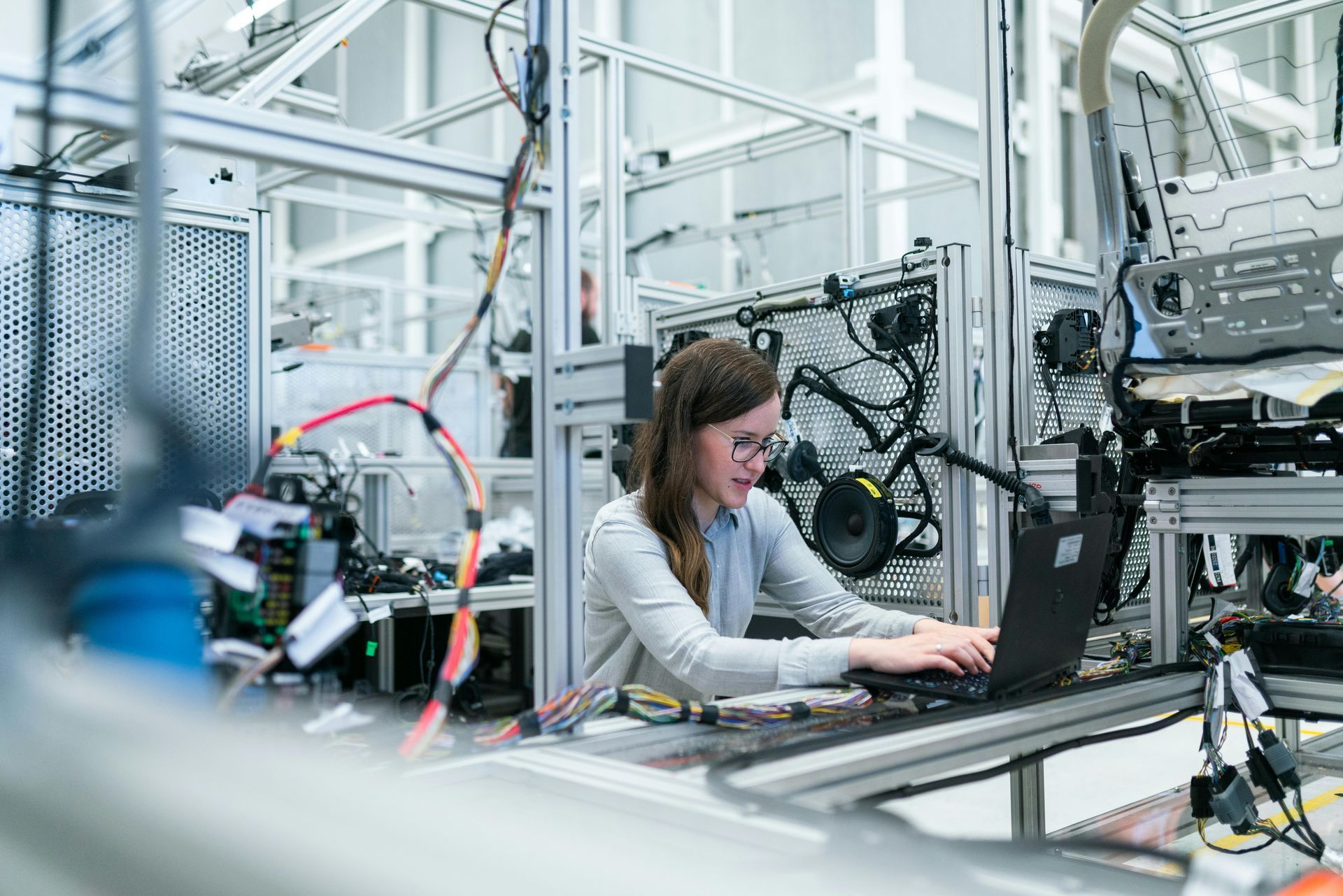Share
Insights to Scale E-reader Technology in K-12 Education

Helping teachers individualize learning for students in classrooms is critical to improving student performance. Technology is a key to success, particularly with the high ratio of students to teachers. Technology — which could be laptops, e-readers, or other types of technology — enables getting more content to students in a user-friendly way, individualizing this content, and measuring the results so that teachers can better adjust approaches for each student.
In education circles, there is much talk about technology in schools. Yet while the buzz is high, Stax found that the existing fact base is low. There is a dearth of measurement and data; there is a lack wof best practices; and there is largely a vacuum and a lack of knowledge regarding what is really taking place in the market. This lack of data is hindering adoption and scaling. Based on our deep understanding of and passion for education, we decided to take action to begin creating a knowledge base to inform school leaders and spur action, so more e-reader programs will be implemented.
Stax Acts
For nearly two decades, Stax has worked closely with clients in the education sector to provide data-driven insights and actionable research to help innovators deliver positive change for students, teachers, and administrators. The firm has a long-standing commitment to encourage ground-breaking K-12 educational initiatives in our communities on an ongoing basis through pro bono work and direct financial support. This direct, hands-on experience has enabled Stax to develop a deep understanding of the potential for technology to transform K-12 education.
In undertaking research regarding the use of technology in schools, we discovered a profound knowledge gap in the U.S. education system regarding e-reader programs. We could not find a data-driven view of what’s really going on in the market in 2014, or best practices for introducing and implementing e-reader programs. So, we took the initiative to:
1. Get Data and Insights
At Stax, we focus on getting the right data before drawing conclusions, because we know that good data combined with expertise yields actionable insights. So, we initiated and conducted a national meta-study (sponsored by Stax, Stax DevCorp, and ed.co) on K-12 tablet and e-reader programs. We did a deep dive, identifying and reviewing 70 e-reader programs nationally. We also interviewed administrators and teachers at 44 schools as well as a series of education and technology experts, content providers, and executives in the field. We wanted to know why faster adoption wasn’t happening. This study identifies challenges and opportunities. Insights are summarized below.
2. Get Practical Experience
Beyond a national study, we also devised a strategy and plan to help one school pilot test e-readers and measure the results. Specifically, we sponsored and partnered with school leaders to introduce an e-reader pilot program into the Bronx Lab School, a public high school in New York City. Further transformation is taking place at this school and we have gained valuable firsthand experience of the challenges and opportunities in implementing an e-reader pilot — to compare with the broader data set and share broadly.
Stax is sharing these results with others who can benefit from the intersection of education and technology. Our hope is that schools, districts, and school networks can incorporate these insights into a working plan to introduce e-readers and other technologies into classrooms.
National K-12 Tablet and E-reader Program Study
This meta-study of 70 e-reader programs and interviews with more than 50 educational leaders yielded important learnings, insights, and best practices. Here are 9 insights:
1. Pilots are Taking Place at all Levels of K-12.
This study found e-reader pilots somewhat evenly distributed across elementary schools, middle schools, and high schools.
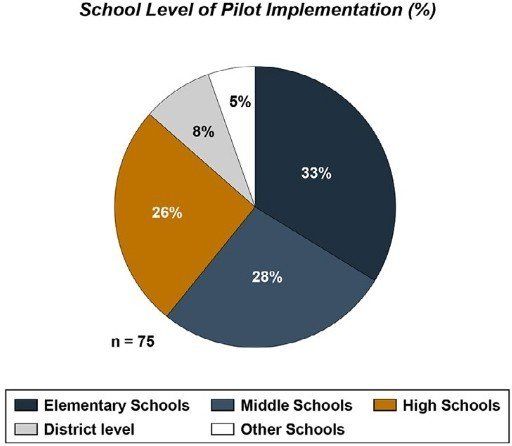
2. Measurement of Outcomes is Inconsistent and Measures Vary Greatly.
Among the schools interviewed, 61% used some type of quantitative measurement of their program. However, a majority of those measuring results only gathered basic data (like the school subject for which the e-reader device was most used; English was the most common subject at 24%), and only 18% used a control group.
Insight:
Those piloting e-reader programs should think hard about what to measure, as current measures of success are often lacking and are inconsistent
3. Among Programs Measuring Results, the Results are Generally Positive.
In those schools that are quantitatively measuring outcomes, 74% say the program results are largely positive. Schools are seeing improvements in achievement levels and student engagement.
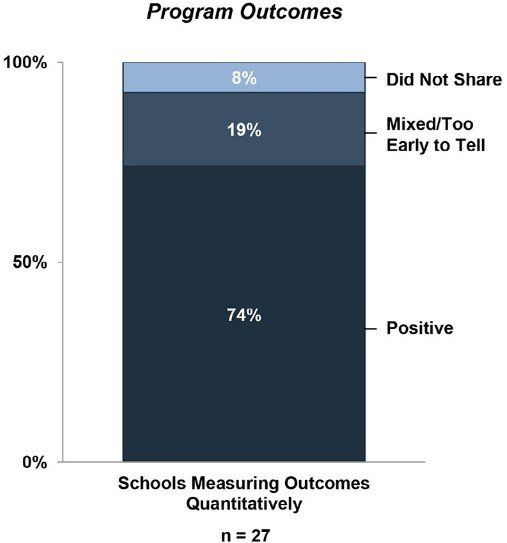
Comments from programs with positive outcomes:
“We ended up looking at before and after [device implementation] test scores for academic achievement. In general, everything was positive. In math, there were significant increases.” — District Technology Director, MI
“Students say they are more engaged in class now; teachers see some distraction but it’s not overwhelming; 65% of parents felt the program was somewhat or very successful.” — Survey Results, School District, WA
Comments from programs where outcomes are mixed or it is too early to tell: “We did not see a marked difference in student learning, but it improves engagement.” — Principal, Middle School, MA
“Our standardized test scores are flat. At-risk students seemed to have caught up to the others when teachers use technology to teach. It seems to have leveled the playing field.” — Teacher, Middle School, MN
Insight:
Where outcomes related to e-readers are being measured, the results are generally positive.
4. Funding for E-Reader Programs Comes from Multiple Sources.
There is no single source of funding for e-reader devices, though funding often comes through local sources. Funding sources include districts, schools, grants and donations, states and federal governments, and parents.

Insight:
Creative educational leaders are finding a multitude of funding sources for e-reader pilots. There is great opportunity at the district level to provide high-level guidelines and more funding.
5. Teachers Hold the Key to an E-Reader Program’s Success.
Key study findings indicate that teachers need to be assisted in transitioning existing curricula to a digital format, and need time (at least three months of training) to familiarize themselves with devices prior to implementing the program. Best practices include peer-to-peer training among teachers and ongoing professional development. Also, functionality is required that enables teachers to control or monitor student usage during class time.
Insight:
Teachers are the key to success. They must be given the time and training to become familiar with e-reader devices and how best to use them.
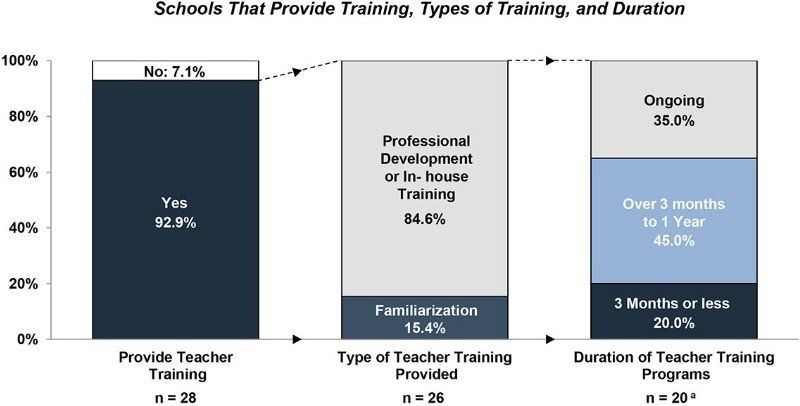
6. In addition to teachers, educating parents is also essential.
Parents play a key role in encouraging engagement among students. Parents are particularly important when programs give students devices to take home.
Insight: Successful programs include parent engagement and education.
7. iPads Dominate, but Lower-Cost Chromebooks are Gaining.
Apple was first to market and remains the leader, as iPads have a 71% share. Apple products have the “cool” factor, have high familiarity, and were judged better for creative tasks. But there is opportunity for lower-cost devices (priced below $300), which is the segment where Chromebooks already have 20–25% market share and are gaining. Teachers gave glowing reviews to Chromebooks for ease of centralized management.
Insight: Don’t choose devices based on brand appeal; consider the intended use and the pros and cons of all options. There is a massive opportunity to save on costs — give educators a way to evaluate the differences.
8. The Loss and Breakage Rate is Lower than Expected.
Only about 3% of devices are lost or broken, which is lower than expected. But these low rates are due in part to new devices and assessments taking place after just 3–6 months into the program.
Insight: Believing devices will be lost and broken isn’t accurate. This shouldn’t be a barrier to proceeding.
9. Change is Hard, but the Rewards Outweigh the Risks.
All steps in implementing an e-reader program can be challenging, from securing funding and procuring devices to training teachers, adapting the curriculum, and measuring the results. But the general results from programs that are measuring their results indicate positive outcomes.
Insight: Implementing an e-reader program requires dealing with change and overcoming multiple barriers. Initial results indicate that these efforts are worth it.
Tablet Pilot Program at Bronx Lab School
BLS Background
Part of the largest public school system in the U.S., Bronx Lab School (BLS) in the Bronx, NY, is a school Stax has supported for years. It is for grades 9–12, with enrollment of 472 students. Of BLS’s students, 55% are Hispanic, 40% are black, 3% are Asian, and 2% are white; 100% are free- and reduced-lunch eligible. Exposure to technology in the classroom has been minimal. The school has no formal process for choosing technology platforms or devices, and no tech staff to evaluate products.
While processes and resources for technology assessment and selection have been lacking, New York City does have as a process for determining the traditional content that is used classrooms. That process involves department teachers working with their partner teachers and department chair to ensure that content matches the school’s goals and the department’s curricular vertical plan. However, given the recent introduction of multiple e-reader platforms — and that some of the most promising ones are startups and newer companies — most districts have yet to catch up with all of the components for evaluation of the content on these platform, and don’t yet have communicate guidelines that are easy for educators to use. Simply put, the industry of new providers is moving very fast and it’s hard for any large organization, particularly with government backing, to lead on guidance for adoption.
Lack of E-readers at BLS
In late 2013, principal Sarah Marcy and Stax confronted the question: With more than 90% of students having smart phones, why didn’t BLS have e-readers in classrooms? The root causes were many, and were consistent with barriers that schools across the country face:
Limited funding and few guidelines on where to begin in securing funding. Lack of knowledge about this emerging segment with a variety of players who are different and disruptive to traditional providers. Unreliable internet connectivity. Lack of internal tech support. *A complex procurement process.
BLS was not alone. It is just one of the 1,700 public schools in New York City, none of which had guidelines regarding e-readers. And these schools are no different than most of the other schools in America, which due to the rapid changes in technology do not have technology programs, plans, or resources.
Considering an E-reader Pilot
With its pulse on the national trend of e-reader pilots taking place across the country, Stax proposed supporting an e-reader pilot at BLS. This proposal followed a back-of-the-envelope analysis suggesting a pilot was affordable, if there were resources to figure out what to do and to help manage the process. Stax saw the potential to merge learnings from the national survey with takeaways from a local pilot. In combination, insights developed from these efforts could help accelerate the initiation and scaling of e-reader programs nationally.
Launching the E-reader Pilot
With the agreement of BLS, beginning in January 2014, Stax partnered with ed.co, FEGS, and the BLS educator team to develop and implement an e-reader pilot at BLS. This pilot went from January to August 2014, funded by Stax, friends of Stax, and the Friends of the Bronx Lab School. Stax provided more than 15 staff days for assistance with procurement, implementation, and measurement of results. This pilot was initiated with a data-driven approach and a focus on measurement to determine what worked, where improvement was needed, and how best to scale. Key considerations and elements of the pilot included:
Goals: In conjunction with the educators, Stax set short- and long-term goals. Short-term goals: get students to read more and identify themselves as readers. Long-term goals: increase comprehension and vocabulary, and improve summer and independent reading. Participant selection: The BLS 9th-grade English program, consisting of 130 students, was selected for the pilot, with the 10th-grade English classes as the control group. Measurement: The team developed measures for the participants and control group. Forms of measurement were pre- and post-pilot surveys of students and teachers, along with usage data collected by the platform providers. Stax took this data — such as the number of annotations in the text per student and the content of these annotations — analyzed the data, and drew conclusions. Early adopting teachers:BLS and Stax sought out great educators to lead the way in trying this new technology. Platform selection: As the search began for the appropriate platform, many questions arose: What devices are supported? How easy or difficult are they to use? What features are available to help teachers and students? Will the platform provide teachers with professional development training and support? How does the system measure progress? Can data be collected from devices and exported for analysis? How extensive is the digital library and what are the limitations of ownership?
After the assessment of various options, and through this study, Stax helped BLS choose a technological platform for the long term.
Device selection. iPads were chosen because they are currently used in most e-reader programs, though over time there is likely to be a shift to lower-cost tablets. Device procurement. The procurement process involved using FAMIS (a portal for procurement set up by the Department of Education) to receive education discounts. However, as is often the case in education, procurement can be complex and slow. *Device security. An important consideration was ensuring that the devices were secure, protected, and monitored. Because many parents were nervous about their children receiving expensive devices, security and monitoring were extremely important in assuring parents.
In April 2014, the e-reader program launched, with all of the 9th-grade English classes using e-reader devices. The platform providers offered training and support for teachers and were on-site to present to classes.
Reaction and Results
Different stakeholders had different experiences and reactions, but most reactions were positive.
*Students: The initial student reaction was positive. Students were curious, engaged, and quick to adapt. Some frustration was experienced when promised features or internet connectivity failed; students are tech savvy and have low tolerance for slow speeds and tech bugs. Where a unit for measuring success and reading level was available, gamification was used, increasing engagement and heightening curiosity. Students were hooked and wanted to see their scores go up.
Results: E-readers lead to more reading, more frequently
9th-grade students who were offered e-readers stated that they:
Read more books: 56% stated they read more books since getting access to an e-reader. Read school books more frequently: on average, those with e-readers read school books 11.5 days per month, compared to those in the control group who read school books 8 days per month. Source: Stax pre/post survey results of 9th graders at BLS with e-readers and control group.
*Teachers: The experience and satisfaction of the teachers at BLS was similar to the findings of the national e-reader survey. When provided reasonable time for training and familiarization, teachers found the e-reader technology easy to implement, and found quick and regular access to data to be extremely helpful.BLS teachers also felt that use of e-readers increased student engagement and that students have “more pride when issued a hip device like an e-reader.”
Results: Use of e-readers for assessments leads to more reading
Students are using e-reader platforms for assessments and annotations; teachers are using them to give feedback
More assessments, more reading. Those 9th-grade students using e-readers to complete at least 50 assessments read 26.6 minutes per week, which is 5 times more than those who didn’t complete at least 50 assessments, who read 5.8 minutes per week. Annotations and teacher feedback. 67% of students annotated at least once over 10 weeks, averaging 1.5 annotations per student. Teachers provided feedback on 84% of annotations. This interactive process is important in student reading development. Source: End of Program Data Analysis from one of the platform providers at BLS
Because this technology is still in development, there were a few hiccups in implementation. Occasionally students could not log into their accounts or internet connectivity was too weak to support the technology. In these scenarios, valuable classroom time was lost. (The hope is to resolve these issues as technology is updated.) While there was some initial resistance, the dedication and patience of the staff helped deal with delays, poor connectivity, and platform growing pains.
*Principal: BLS principal Sarah Marcy shared that students learned the platforms quickly and were almost immediately able to engage in self-directed independent reading. The teachers loved the platforms, and their comfort grew as they became more familiar with them. Both teachers and students like the interactive features, particularly being able to “social network” through reading. Teachers also like the ability to track student progress, and kids love to see their own scores increase.
Insights from BLS:
BLS’s situation is like that of many public schools: a high rate of smart phone usage by students but low use of technology in classrooms. Limited budgets and IT resources. Proceeding with an e-reader pilot takes leadership, risk taking, and a strong champion. Selecting a platform and devices can be time consuming. (Capable private-sector partners can provide great value.) There will be some initial resistance, and technical issues will occur along the way. Students will love having e-readers in classrooms and will find them engaging. They have the potential to transform how learning occurs. Loss and damage may be lower than expected. *Teachers may initially be hesitant, as this represents a change in how they teach. But once they become familiar with these devices, most will love them and see great potential.
Going Forward with E-readers at BLS
The Bronx Lab School plans to continue and expand this program, with continuing funding and support from Stax and Stax’s partners. The plan for the 2014–15 school year is to provide devices and use one of the e-reader platforms in the 9th and 10th grades with every student. The focus will continue to be on independent reading and finding ways to use digital readers as part of whole-class texts. As this program expands, Stax will continue to provide support. Stax will ensure that BLS is set up for success and will provide tools and support so that the program will grow and sustain itself through its own staff and internal support team.
Key Takeaways and Conclusion
Stax’s research and practical experience with Bronx Lab School provided many consistent findings.
Consistent Findings In National Research and BLS Pilot
Among schools that measure, there tends to be FAST PAYBACK. TEACHERS NEED TIME to become familiar with technology platforms, often taking months. Schools typically lack resources and defined processes for technology assessment, selection, and technology procurement. Schools have defaulted to iPads but this is changing. There is low loss and breakage of devices.
Conclusions from this research and the experience at BLS include:
Technology in classrooms can and do transform education.Everything from Stax’s research and the experience at BLS confirms this. The national data and firsthand experience show that technology in classrooms engages students, enables more personalized learning, and can improve learning outcomes. Getting technology into classrooms has a cost, which should be expected. School leaders must recognize that devices and platforms are an investment that requires capital and resources.
It is very important that teacher training and professional development be taken into account when budgeting for these programs. The most effective programs involve measurement. Schools must establish measures of success for themselves and their providers. Implementing technology in classrooms takes time. It takes time to select, procure, and implement technology, and it takes time to familiarize teachers, change the culture, and change teaching processes.
Expect some failures along the way — it is part of any learning.
New undertakings are an iterative process of trial, error, learning, and improvement. That’s what is required for progress. The world doesn’t just change. Change takes committed people asking the hard questions and taking the lead to drive it.
Stax’s national study of K-12 e-reader programs and Stax’s experience supporting the e-reader pilot at the Bronx Lab School show that technology in classrooms represents the future of education. School leaders must make this a priority, show leadership, allocate resources appropriately, take risk, and move forward. The rewards for doing so are enormous.

